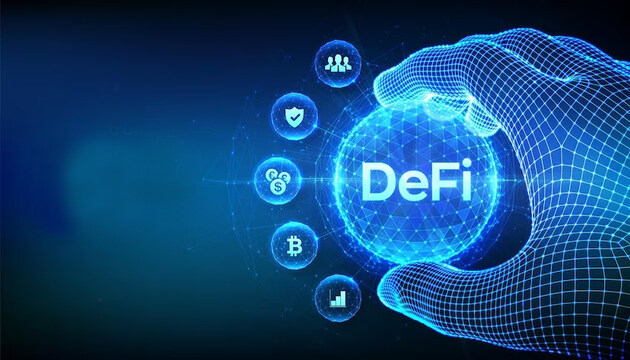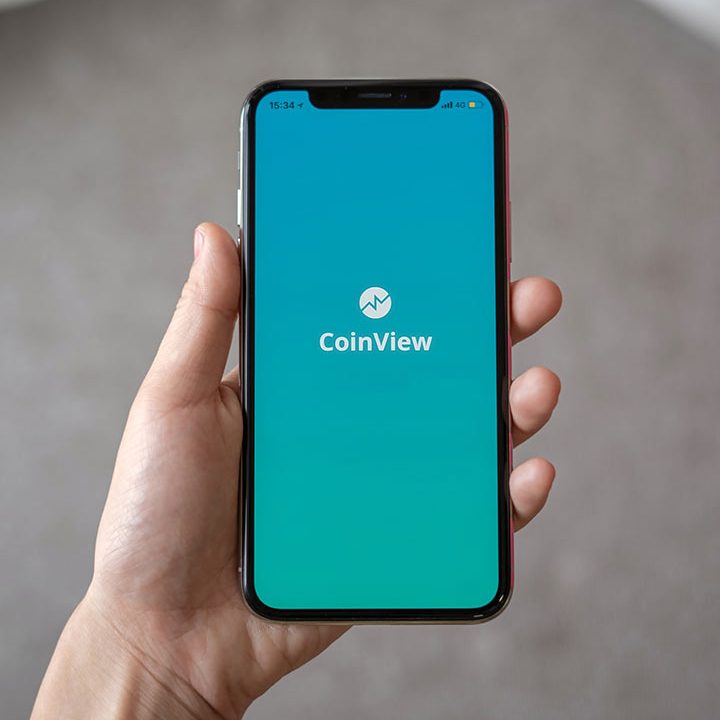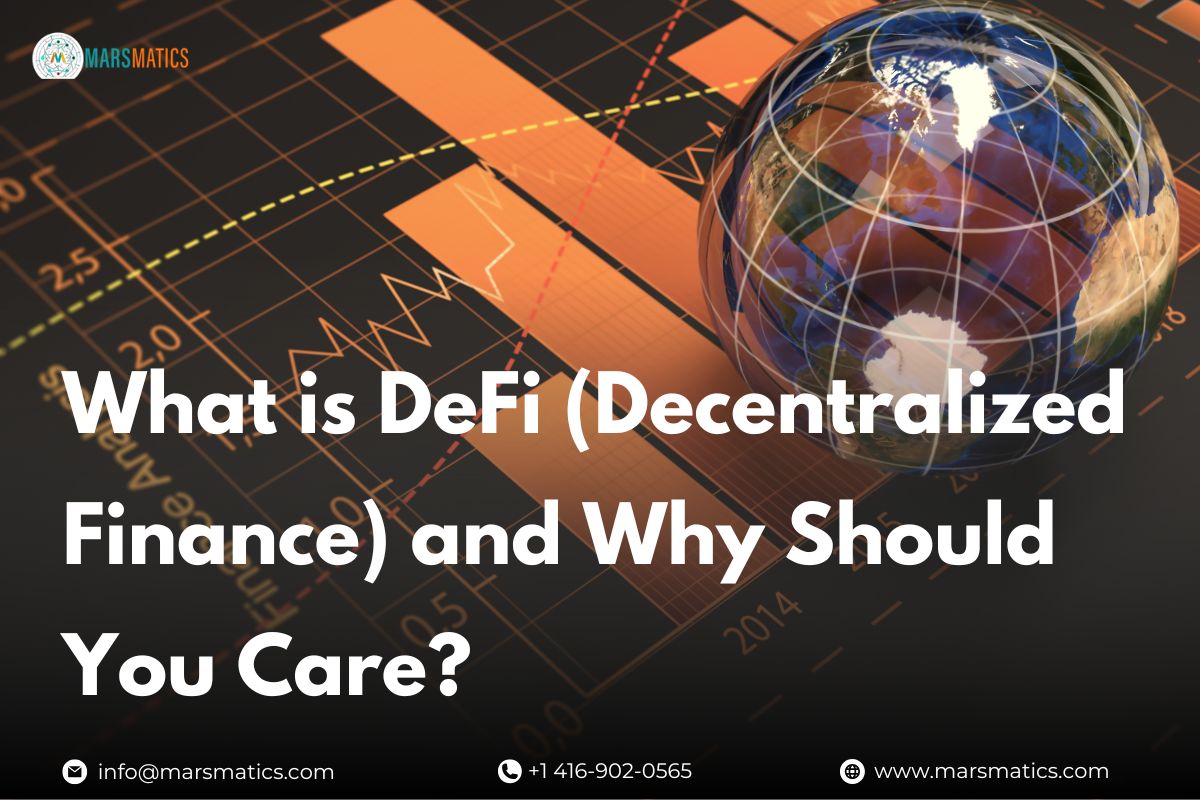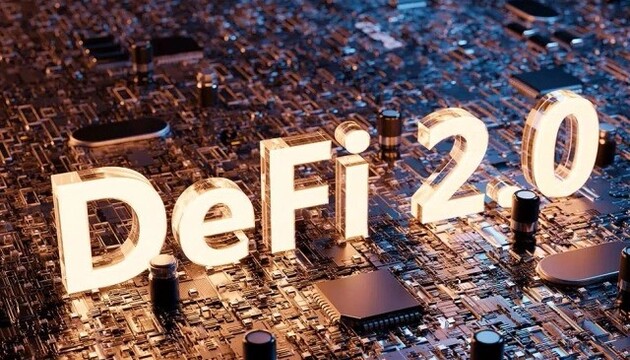What is DeFi (Decentralized Finance) and Why Should You Care?
Tired of hidden fees, approval delays, and relying on banks to move your money? You’re not alone—and that’s exactly why Decentralized Finance (DeFi) is gaining momentum across the globe. So, what is DeFi? At its core, DeFi is a blockchain-powered financial system that eliminates the middleman. Whether it’s lending, borrowing, trading, or earning interest, DeFi enables users to manage their money through decentralized applications (dApps) without the need for traditional institutions. Wondering how does DeFi work? It runs on smart contracts automated, trustless programs that execute transactions securely and transparently on networks like Ethereum.
How Does DeFi Work?
To understand how DeFi works, think of it as a digital version of financial services—only without the banks, paperwork, or waiting in line. Instead of relying on traditional institutions, Decentralized Finance uses blockchain technology to create a peer-to-peer financial system.
At the heart of DeFi are smart contracts, which are self-executing programs that run on blockchains like Ethereum. These contracts automatically carry out financial agreements—like lending money or swapping tokens—once conditions are met, without needing a third party. Users interact with DeFi through decentralized applications (dApps), which function like online platforms for trading, borrowing, lending, and saving. You simply connect a crypto wallet like MetaMask, choose the service you want, and the smart contract does the rest. By removing centralized control and replacing it with code, DeFi offers a faster, more transparent, and borderless way to manage your money.
Also Read: Public vs. Private Blockchain Development: Which One Costs More?
Key Benefits of DeFi You Should Know:
| Benefit | Description |
| Financial Freedom | Users control their assets directly—no bank approvals, credit checks, or centralized restrictions. |
| Global Accessibility | Anyone with an internet connection and crypto wallet can access DeFi, regardless of location. |
| Lower Costs | DeFi eliminates intermediaries, reducing transaction and service fees. |
| Transparency | All transactions and protocols are recorded on public blockchains—open to anyone for review. |
| Passive Income Opportunities | Users can earn yields through staking, lending, and liquidity pools. |
| Innovation and Flexibility | DeFi evolves rapidly, offering new financial tools and customizable solutions through dApps. |
| Interoperability | Many DeFi platforms work together, allowing seamless movement of assets across services. |
Real-World Use Cases of DeFi in 2025:
In 2025, DeFi isn’t just a buzzword—it’s actively reshaping how we manage and interact with money. From simple savings to complex financial strategies, DeFi apps for beginners and experts alike are offering tools that rival those of major banks, without the red tape. Here are some real-world applications showing the true benefits of DeFi:
1. Lending and Borrowing:
Platforms like Aave and Compound allow users to lend crypto and earn interest or borrow assets by putting up collateral—without credit checks or paperwork. This highlights the advantage of DeFi vs traditional finance, where access is often limited or delayed.
2. Decentralized Exchanges (DEXs):
Uniswap and PancakeSwap enable users to trade cryptocurrencies directly with one another—no centralized exchange needed. Trades are quick, transparent, and non-custodial, reducing risk of hacks and fraud.
3. Yield Farming and Staking:
Users can lock up their tokens to earn rewards like a high-interest savings account, but built on blockchain. These passive income strategies are a major attraction for crypto investors.
4. Insurance Protocols:
DeFi also supports decentralized insurance platforms like Nexus Mutual, which cover smart contract failures or crypto wallet breaches. This answers a common concern: Is DeFi safe to use? While risks exist, DeFi is building its own safety nets.
5. Cross-Border Payments:
DeFi enables lightning-fast international payments with minimal fees. No banks, no currency conversion delays—just peer-to-peer transactions on a global scale.
As DeFi apps for beginners continue to improve user interfaces and education, more people are tapping into decentralized tools to meet everyday financial needs with fewer barriers and more control.
Also Read: Cost of Application Software for Startups
Risks and Challenges of DeFi:
While the benefits of DeFi are impressive, it’s important to understand the risks that come with it—especially if you’re exploring DeFi apps for beginners. The decentralized nature that makes it powerful also introduces new types of challenges.
| Risk/Challenge | Explanation |
| Smart Contract Vulnerabilities | Since DeFi runs on automated code, bugs in smart contracts can be exploited by hackers. Even if you understand how does DeFi work, these flaws can be hard to detect. |
| Lack of Regulation | Traditional finance is backed by legal protections; DeFi vs traditional finance lacks oversight, which can leave users unprotected during disputes or fraud. |
| Rug Pulls and Scams | Some projects are launched to deceive—once users invest, developers vanish with funds. This makes users wonder, is DeFi safe to use? |
| User Error and Responsibility | With DeFi, there’s no customer service—lose your private keys, and access to funds is gone forever. This can be overwhelming for those using DeFi apps for beginners. |
| High Volatility and Fees | Market swings and blockchain congestion can lead to expensive or delayed transactions, especially during high traffic periods. |
Though DeFi opens up a world of opportunity, users should proceed with caution, do their research, and start small—especially if new to the space.
DeFi Trends to Watch:
As we move deeper into 2025, Decentralized Finance continues to evolve—pushing the boundaries of how we engage with money and digital assets. While the foundation of how DeFi works remains the same, the landscape is rapidly expanding with new technologies and user-focused innovations. Here are some of the top DeFi trends to watch this year and beyond:

🔹 1. Integration with Traditional Finance (CeFi + DeFi):
Banks and financial institutions are beginning to embrace DeFi protocols. This blend of traditional and decentralized models could offer the best of both worlds—security, scalability, and transparency.
🔹 2. Layer-2 Scaling Solutions:
Ethereum congestion and high gas fees have pushed developers toward Layer-2 networks like Arbitrum and Optimism. These help DeFi platforms run faster and cheaper, making them more accessible to everyday users.
🔹 3. DeFi Regulation and Compliance Tools:
As DeFi grows, so does regulatory attention. Expect more KYC/AML-compliant DeFi tools and platforms aiming to bridge the gap between freedom and legal accountability.
🔹 4. Real-World Asset Tokenization
From real estate to stocks, more real-world assets are being tokenized and traded in DeFi systems. This brings more liquidity and opens up traditional markets to global users.
🔹 5. AI-Powered DeFi Tools:
Artificial Intelligence is entering the DeFi space, offering smarter trading bots, personalized yield strategies, and advanced risk management tools—particularly helpful for newcomers.
🔹 6. Focus on User Experience:
With the growing number of DeFi apps for beginners, there’s a shift toward more intuitive interfaces, mobile-first platforms, and educational onboarding to lower the entry barrier. These trends show that DeFi isn’t just a passing phase—it’s an evolving ecosystem, continuously bridging gaps between innovation and accessibility.
Conclusion:
As we’ve explored, What is DeFi is more than just a trendy question—it’s a gateway into a new era of financial freedom. Decentralized Finance is changing how we save, invest, borrow, and send money by offering tools that are open, permissionless, and built for a digital world.
It is important to understand how does DeFi work, you unlock access to innovative platforms that cut out the middleman, reduce fees, and give you full control over your assets. While there are risks to consider, the benefits of DeFi—from transparency to global access—make it a space worth watching and exploring. Whether you’re a beginner or a tech-savvy investor, now is the time to start learning and getting involved.
✅ FAQs
Q1: What is the main goal of DeFi?
A: DeFi aims to eliminate intermediaries like banks and brokers by enabling decentralized, peer-to-peer financial services on the blockchain.
Q2: Is DeFi safe to use?
A: While DeFi offers transparency and control, risks like smart contract bugs, lack of regulation, and scams still exist—users should do proper research.
Q3: How do I start using DeFi apps?
A: You’ll need a crypto wallet (like MetaMask), some ETH or stablecoins, and access to a dApp platform like Uniswap or Aave.
Q4: Can DeFi replace traditional banking?
A: DeFi won’t fully replace banks overnight, but it offers an alternative system that could complement or disrupt parts of the traditional financial sector.









